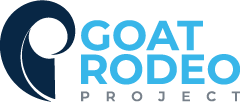The current health crisis continues to impact how we live and how we work in ways that none of us have experienced before.
The global economic repercussions of social distancing have been well documented and with record unemployment, few economists are willing to predict when we will return to the next normal.
For HR departments, big or small, across the country this has been an exceptionally busy time. The great recession was a CFO led crisis. This is one for the CHROs.
As a former CHRO, I am very appreciative of the work being done by my colleagues and I have been impressed with how they have responded. In speaking to many of them, it strikes me that there are four phases to their work.
FOUR PHASES OF CHRO WORK DURING COVID19 CRISIS
REACTING PHASE
It started with reacting. Regardless of your organization and your readiness, this required speed to action – a capability some HR teams are criticized for not having. The timing of the initial lockdown presented some challenges. Some employees were already on March break making co-ordination difficult. The key focus was health and safety and ensuring your people were set-up to work remotely. Strong communication and decisive action were the orders of the day to help provide clarity and where possible reassurance.
RESPOND PHASE
As more information became available about the impact of the lockdown, we entered a respond phase. It was important to ensure those working from home, in many cases for the first time, were set-up appropriately to be productive. Ergonomic assessments are on the rise and your people may be asking for equipment to improve their home office effectiveness. Processes needed to change – particularly paper heavy ones. Resources needed to be shifted to the areas of most need – in many cases it will be all hands to the pump. This will accelerate the creation of a digital employee experience through a new way of communicating and learning via Zoom.
Leaders had to adapt.
Isolation and anxiety will be impacting people’s mental wellbeing making regular connection more important than ever.
It will continue to be critical for leaders to build trust by checking-in, not checking-up. Principle-based decisions need to be made about paid leave, childcare, and future incentive programs that may have been impacted by this once in a lifetime event. Many organizations have also had to implement creative cost-saving initiatives and in many cases making the difficult decision about lay-offs to maintain liquidity. With the new Federal stimulus programs being launched, many HR professionals have become experts.
We could be in this respond phase for several more weeks. It will be long days as we adapt to a fluid and evolving environment. The emphasis on communication and engagement continues with many a virtual happy hour and virtual yoga classes being organized. There will also be a focus on transparent state of the nation updates being delivered empathetically by senior leaders from the comfort of their own bunker. Checking the sentiment of your team through regular pulse checks is a great way of staying connected to how people are feeling to help you respond appropriately.
PHYSICAL RECONNECTION PHASE
It important for all of us to realise that we will move out of this phase – this is only temporary. Our next phase will be to reconnect physically and that presents opportunity alongside challenge. People will be anxious. Working practices will change and many might not want to come back to the physical workplace. There will be feelings of guilt and loss if colleagues have been laid off or been impacted directly by the virus. There will also be new questions to answer. How will a phased return to work be managed? Will the vulnerable be treated differently?
Amongst the angst lays opportunity.
You should think carefully about how you welcome back the team or should we say welcome them forward. The shared experience needs to be acknowledged and questions addressed. What did you learn from the experience? How did your culture hold up? How did your leaders respond? What would you do differently next time … because there will be a next time.
REIMAGINE PHASE
The final phase is perhaps the most important for long term sustainable success. As we face more disruption, we need to reimagine how we work and get things done for sustainable success. Opportunities presented by contactless technology and automation must be effectively leveraged and their associated risks mitigated. People will want more purpose to their work and their lives and will be re-evaluating the relationship with their employer and the benefits that it provides.
As a HR department, you have fresh insights on what really matters to people and what is just fluff. Kondo your cluttered HR department in the same way you decluttered your cupboards and draws. As an employer, your profile has been tested and if there were any failures to your response, now is the time to introduce more human approaches as the economy recovers. Engage your people in the process to amplify the impact and the benefits.
There has been so much loss and sadness during this crisis that has tested our resilience to the limits. We all need hope. By taking the time to reflect, learn the lessons, and adapt will provide you with the opportunity to respond stronger than ever.
What lessons have you learnt? How are you planning to reconnect with your people? How will you reimagine how work gets done? Let me know – I’d love to hear from you!
*A goat rodeo is slang for something going completely wrong, and there’s nothing you can do but sit back and watch the train wreck.

